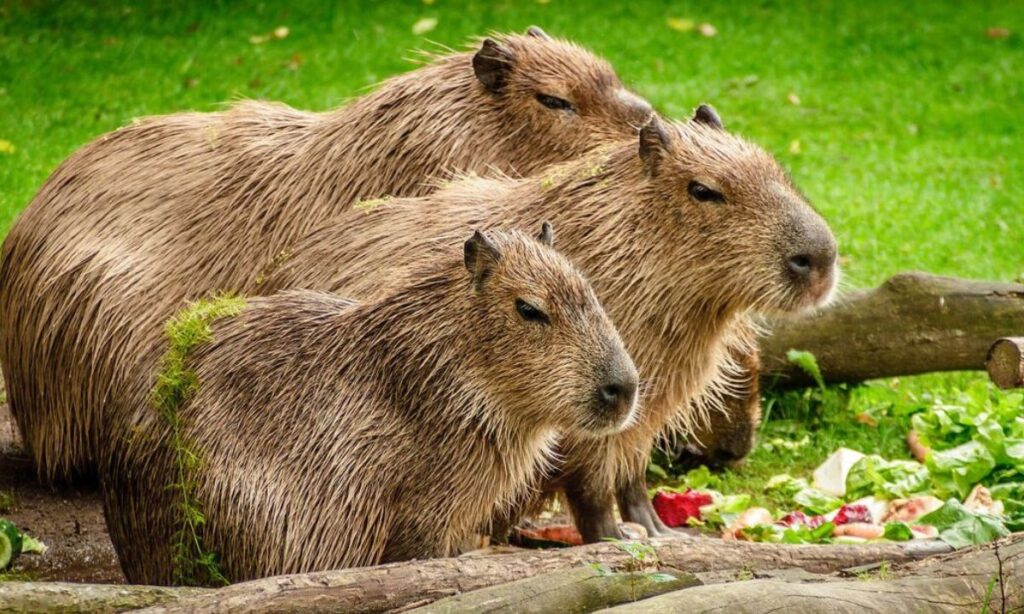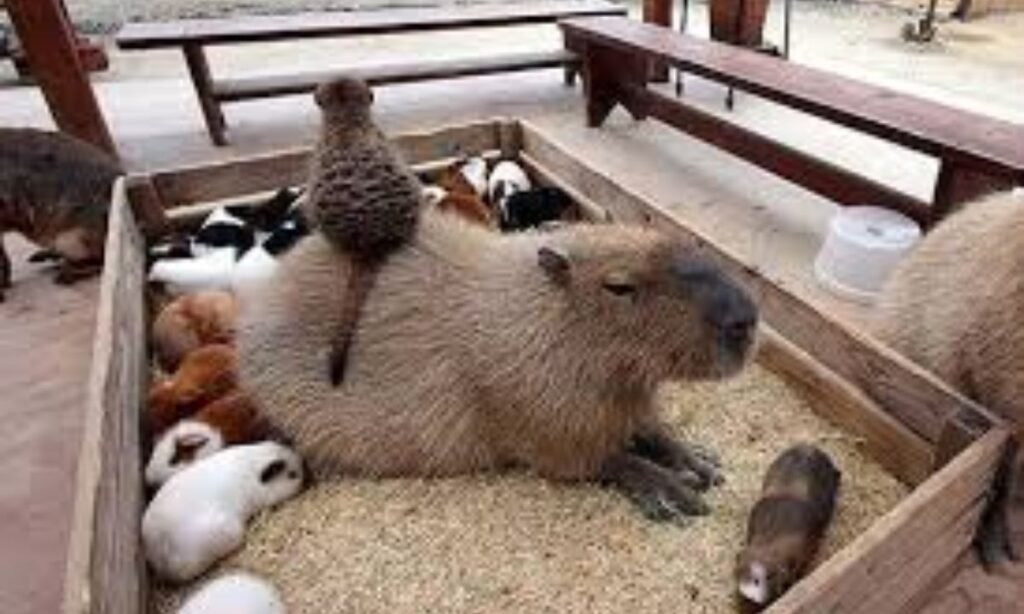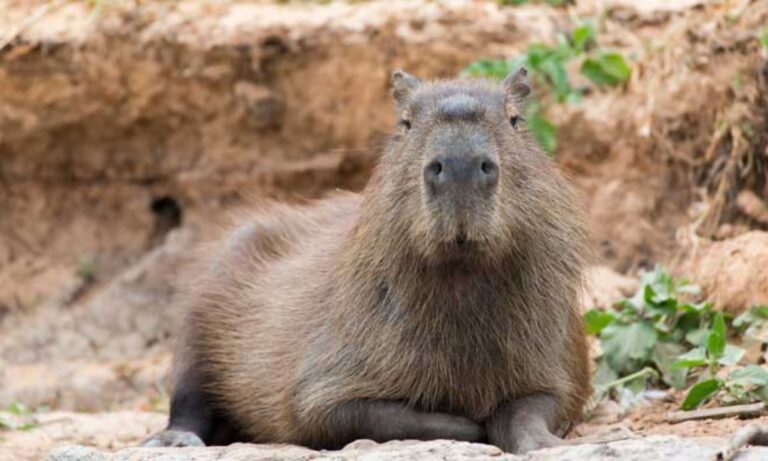Capybaras are fascinating creatures that have gained popularity online due to their docile appearance and social nature. As the world’s largest rodent, these South
American natives have captured the hearts of many animal enthusiasts. But the question remains: can you legally keep a capybara as a pet in Australia?
Species Overview
They are highly social creatures that thrive on interaction with their own kind. Their natural habitats include dense vegetation around water sources, providing them with both food and protection from predators. Capybare
They are herbivores, primarily feeding on grasses and aquatic plants, and can consume up to 3 kilograms of vegetation daily. These creatures are known for their calm and gentle temperament, which is one reason why some people consider them as potential pets.
Can You Own a Pet Capybara?
Legality
In Australia, keeping a capybara as a pet is generally not legal. Australia has some of the strictest biosecurity laws in the world, designed to protect the country’s unique ecosystem from invasive species. Capybaras are not native to Australia and are classified as exotic animals.
Australian state and territory has its own regulations regarding exotic animal ownership, but all follow the federal guidelines that restrict capybara ownership. Attempting to keep a capybara without proper authorization can result
Read This Blog; Can You Have a Pet Cow in Australia?
Ethics
Beyond legality, there are serious ethical considerations when contemplating capybara ownership. These animals are not domesticated like dogs or cats. They are wild animals with specific needs that are difficult to meet in a typical household environment.
Capybaras are highly social creatures that live in groups in the wild. Keeping a single capybara would likely cause significant stress and psychological harm to the animal. They require constant companionship, preferably from their own species.
Things to Consider
If you’re still interested in capybaras despite the legal restrictions in Australia, here are some important factors to understand about these unique animals.
Capybara Behavior and Temperament

Capybaras are known for their generally calm disposition, but they are not domesticated animals. In the wild, they live in hierarchical social groups with complex communication systems including vocalizations, scent marking, and body language.
These rodents are crepuscular, meaning they are most active during dawn and dusk. They spend much of their day grazing and lounging near water. When threatened, capybaras can be surprisingly fast, both on land and in water.
Housing
Housing requirements for capybaras are extensive and challenging to provide in a typical residential setting. These animals need:
- A minimum of 600 square meters of outdoor space per pair of capybaras
- Access to a pool or pond at least 1 meter deep and 3 meters in diameter
- Both sunny areas and shaded retreat spaces
- Secure fencing at least 1.5 meters high, with additional buried fencing to prevent digging out
- Protection from predators including domestic dogs
- Climate-controlled indoor shelter in areas with temperature extremes
- The enclosure must be designed to mimic their natural habitat, providing opportunities for capybaras to express natural behaviors like swimming,
Read This Blog; Can You Take Personal Leave for a Pet?
Specific Substrate Needs
Capybaras have unique substrate requirements that must be met to maintain their health and well-being. Their habitat should include:
- Soft, natural ground covers like grass and soil for grazing and resting
- Shallow, muddy areas for wallowing, which helps with temperature regulation and skin health
- Sand or dust bathing areas for parasite control
- Vegetation and shrubs for hiding and natural foraging
- The substrate must be regularly maintained to prevent bacterial growth and parasite infestations.
What Do Capybaras Eat & Drink?

Capybaras are strict herbivores with specialized digestive systems adapted for processing high-fiber plant materials. Their diet should consist of:
| Food Type | Percentage of Diet | Examples |
| Grasses & Hay | 70-80% | Timothy hay, orchard grass, fresh lawn grass |
| Leafy Greens | 10-15% | Kale, romaine lettuce, dandelion greens |
| Vegetables | 5-10% | Carrots, sweet potatoes, squash |
| Fruits | < 5% | Apples, melons (as occasional treats only) |
| Supplements | As needed | Guinea pig pellets, vitamin C supplements |
Capybaras require constant access to fresh water for both drinking and swimming. An adult capybara can drink several liters of water daily. Water containers must be large enough for partial submersion, as capybaras often eat while partially submerged.
Like guinea pigs and other rodents, capybaras cannot produce their own vitamin C and require dietary supplementation. Without adequate vitamin C, they can develop scurvy and other health problems.
Frequently Asked Questions
Are there any legal alternatives to keeping capybaras in Australia?
No. Australia’s strict exotic animal laws do not allow for capybara ownership. Consider visiting zoos with capybaras or volunteering with wildlife conservation programs instead.
How much would a capybara cost if they were legal?
$1,000-$3,000 USD. In countries where they are legal, this is the typical price range, excluding the substantial ongoing costs for care and housing.
Can capybaras be kept with other animals?
Sometimes. They can coexist with certain animals like birds and tortoises, but interactions with dogs, cats, and other predators should be strictly supervised or avoided entirely.
How much space do capybaras need?
At least 600 square meters. This is the minimum for a pair, with additional space needed for larger groups and a substantial water feature.
Do capybaras make good emotional support animals?
No. Despite their calm appearance, capybaras are wild animals with complex needs unsuited for this role. Their stress responses can include biting and unpredictable behavior.
How long do capybaras live?
8-12 years. With proper care, they can live up to 12 years in captivity, representing a significant long-term commitment.
Can capybaras be house-trained?
Not reliably. They cannot be fully house-trained and will mark territory with urine and feces as part of their natural behavior.
What veterinary care do capybaras need?
Specialized exotic care. They require veterinarians with specific training in exotic rodents, which can be difficult to find and expensive even in areas where ownership is legal.
Conclusion
Keeping a capybara as a pet in Australia is not legally permitted under current regulations. These restrictions exist for good reasons – both to protect Australia’s unique ecosystem from potential invasive species and to ensure the welfare of these complex wild animals.
Capybaras are fascinating creatures with specific needs that are extremely difficult to meet in a domestic setting. They require extensive space, specialized care, proper social groups, and access to water features that few private individuals can provide. Their dietary, veterinary.
